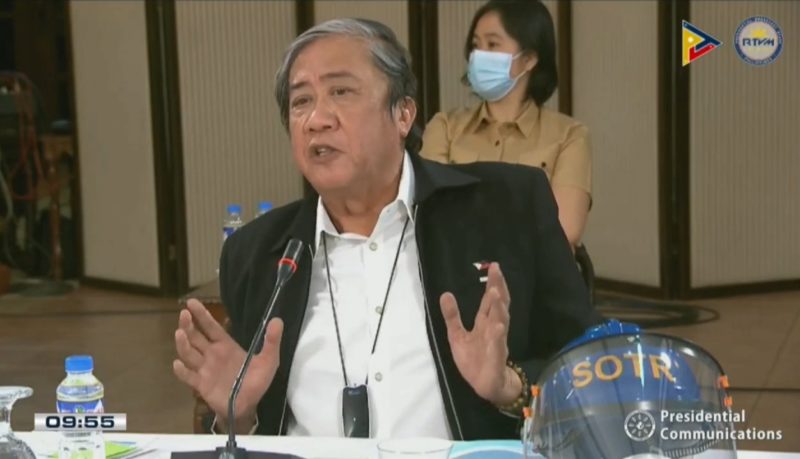
The Department of Transportation (DOTr) will expand the operation of international flights to Clark, Cebu, and Davao once the country transitions to the less restricted community quarantines starting June 1.
DOTr will also allow domestic flights between areas under general community quarantine (GCQ).
President Rodrigo Duterte, in a public address on May 28, announced that Metro Manila, Regions II, III, IV-A, and the provinces of Pangasinan, Albay, and Davao will be under GCQ from June 1-15 while other areas in the country will be placed under modified GCQ (MGCQ).
GCQ is a less restricted form of community quarantine than modified enhanced community quarantine (MECQ). MGCQ, meanwhile, is a more relaxed version of GCQ and is the transition phase prior to the “new normal.”
Transport Secretary Arthur Tugade, during the same public address, said his department plans to “expand international aviation gateways” to Clark, Cebu, and Davao as international flights are currently concentrated in Ninoy Aquino International Airport (NAIA) due to travel restrictions.
Tugade said in preparation for allowing more international flights, DOTr is working with the Department of Health and Philippine Red Cross in the accreditation of testing laboratories to be set up in these gateways. But even while waiting for the accreditation of these facilities, Tugade said international flights can still proceed once GCQ is implemented as there are already accredited hospitals for testing in Clark and Cebu.
He said the plan is to allow international flights in more gateways—Zamboanga, Iloilo, Bacolod, and Bohol—every two weeks.
Most international flights remain suspended
The travel restrictions that existed under the enhanced community quarantine (ECQ) and modified ECQ will remain unless eased or lifted by the government, Immigration Commissioner Jaime Morente said on May 2.
“As a consequence, our operations at the NAIA are still downscaled and our personnel there are still on skeletal and rotational deployment,” Morente said in a statement.
He added that most international flights remain suspended due to travel restrictions that had also affected both Filipinos and foreigners who wished to enter or leave the country.
For domestic flights, Tugade said the DOTr will implement a hub and spoke operation to spread “aviation potentials” and help in “domestic mobility” and domestic tourism. Philippine Airlines president and chief operating officer Gilbert Santa Maria earlier said DOTr has instructed local airlines to prepare for GCQ to GCQ flights.
On the rail side, Tugade said Metro Manila’s rail systems—Light Rail Transits (LRT) 1 and 2, Metro Rail Transit 3 (MRT-3), and Philippine National Railway (PNR)—are ready to operate come June 1 with social distancing markers already in place in the railway vehicles and train stations. He noted, however, that the public should not expect 100% operations as DOTr balances its mandate to provide transportation while doing its responsibility to prevent the spread of the coronavirus disease (COVID-19).
Tugade said LRT 1 and 2’s capacity will initially only be 10% to 20%, respectively, and PNR, 35%.
MRT-3 is expected to increase its speed to 60 kilometers per hour (kph) by December from the current 30 kph as the replacement of rails will be completed by September.
Maritime sector
For the maritime sector, Tugade said an electronic ticketing system, which is currently under a test run, will be implemented by December for sea passengers.
The Philippine Ports Authority (PPA) last year announced its plan to implement an online application procedure in support of an integrated vessel booking and payment system for roll-on-roll-off (Ro-Ro) ports. PPA’s Central Ticketing System aims to serve as a real-time system with a “single window” concept for processing on a single online portal all the transactions needed to be done by the government, shipping companies, port terminal operators, passenger terminal building operators, and the general public.
The system seeks to provide online services for the convenience and benefit of port users, attain overall ease of doing business, get rid of fixers and scalpers, and improve port processes for maritime safety and security.
According to the revised omnibus guidelines in the implementation of community quarantine in the Philippines, road, rail, maritime, and aviation sectors for public transportation should operate at a reduced operational and vehicle capacity in accordance with guidelines by DOTr and in compliance with social distancing requirements in areas under GCQ.
In areas under MGCQ, public transportation should operate at a capacity in accordance with guidelines by DOTr and again in compliance with social distancing requirements.





